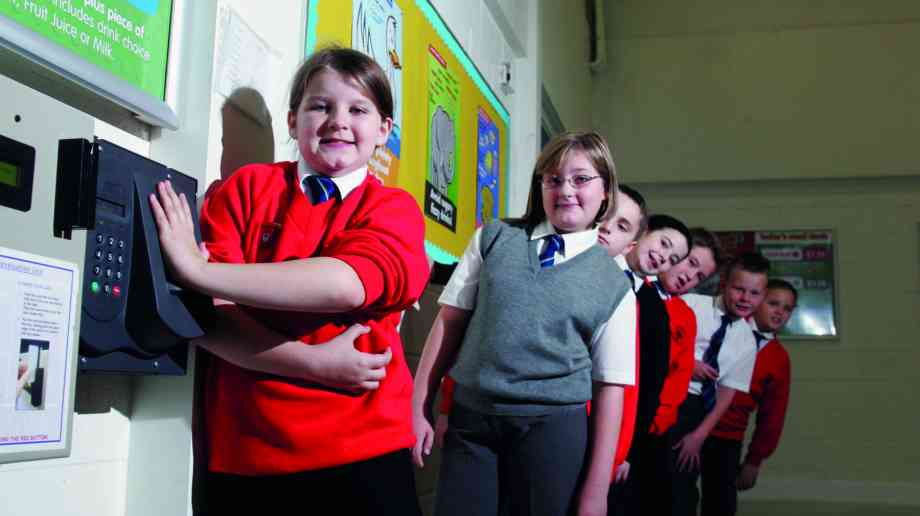
The value of integrated security
Security measures in schools should not only protect staff, students and assets, but also integrate seamlessly with the design of the building. James Kelly, chief executive of the British Security Industry Association, explains how
When it comes to school safety, school officials have a duty of care to their staff and pupils to provide a safe environment in which people can learn.
Last year, following a series of hoax communications to schools across the UK, the National Counter Terrorism Security Office (NaCTSO) issued ‘Advice to leaders of schools and other Educational Establishments for Reviewing Protective Security’.
The advice highlighted the importance of regularly reviewing existing security plans and strategies in order to ensure that the current arrangements will be as effective.
A crucial element of a successful security strategy is having high quality security products in place, especially electronic measures such as CCTV and access control systems, as well as physical security measures. h
ACCESS CONTROL
The average school has a transient population containing many high value goods such as computers and IT equipment, personal possessions of staff and students and personal and financial data – all of which can be extremely attractive to thieves.
Access control systems – as well as physical measures such as escape doors and cylinder locks – can help manage known or anticipated threats by controlling, monitoring and restricting the movement of people, assets and even vehicles in, out and around a building or site.
Within a school environment, access control systems can be utilised in order to restrict access to certain areas of a school, such as an office containing confidential files or a storage room holding hazardous scientific equipment.
Outside of school hours, access can be restricted to the entire building to authorised personnel only. Some schools may also decide to have access control measures at the entrance in use throughout the whole day, incorporating a turnstile or speedgates to ensure that only those with the necessary permissions may enter the building. This way, staff on a reception desk will be able to monitor visitors to the school more closely and keep a record of everyone who is within the building.
Access control points can also be used at the perimeter of a site, at the gates or fences, being open during the day but restricted to authorised personnel when the school is closed.
Electronic access control systems are generally comprised of three main parts. The first is the physical barrier such as a door, turnstile or speedgate. The second is the identification device such as a proximity card and reader, smart card and reader, PIN pad or biometric device. The third element is the door controller and software, which is at the centre of the system and is used to decide who is allowed access, through which access points and at which times of the day.
By undertaking a comprehensive risk assessment of a school, perhaps with the help of a professional security consultant, officials are able to determine which type of measures are most appropriate for the school, and where they should be implemented.
ADDITIONAL BENEFITS
As well as restricting specific areas of a school to specific people, access control systems carry a multitude of additional benefits. For one, they can be successfully integrated with other security systems within a school, including CCTV, intruder alarms and fire detection systems.
Through the use of Internet Protocol (IP) technology, these systems are able to talk to each other in order to maximise their effectiveness. For example, access control systems can be integrated with CCTV systems in order to provide pre and post event recordings should an incident occur.
If someone tried to forcefully enter an access controlled area without the correct permissions, the system could interact with the CCTV in order to prompt it to start recording and provide operators with footage of who is trying to enter or exit through the access point.
The same can be done to emergency exits that are fitted with crash bars or crash handles; the exits can be linked to an intruder alarm system, and if the door is opened – perhaps by a child trying to leave the school – an alarm will sound and the CCTV can be prompted to record, utilising all three systems in order to deliver a comprehensive timeline of events.
DYNAMIC LOCKDOWNS
Another safety plan that is becoming increasingly used within schools is that of dynamic lockdown procedures. Dynamic lockdown is the ability to restrict access and egress to a site or building, or parts of it, through physical measures in response to a fast moving incident such as a firearms or weapons attack occurring either directly at the site or close by.
Dynamic lockdowns can prevent dangerous people from entering the building and can also stop people from moving into dangerous areas. In the cases where this may be necessary, alarm systems can be integrated with access control systems in order to achieve a full site lockdown.
Through a fully integrated system, a panic alarm button or computer programme can be utilised to allow specific personnel to initiate a dynamic lockdown of a site. The trigger can signal to the access control system to lock all doors and windows linked to the system, and can even interact with the air conditioning systems in order to maintain a comfortable temperature.
A panic alarm, which is sometimes referred to as a hold up alarm (HA/HUA), is an electronic device designed to assist in alerting somebody in emergency situations where there is a real threat to a person or property. This could mean alerting the police, local security guards or another response service. A panic alarm is usually controlled by a PA button or a wireless radio PA.
In order for a police response to be issued when an alarm is raised, the monitored intruder alarm must meet with the specific requirements set out by the National Police Chiefs’ Council (NPCC).
In Scotland, requirements are specified by the Association of Chief Police Officers in Scotland (ACPOS). Such requirements include the fact that the installation of the alarm and the services provided by the installing company should be certified by a United Kingdom Accreditation Service (UKAS) accredited certification body.
If the alarm sends signals to an Alarm Receiving Centre (ARC) for monitoring, the ARC must comply with either British Standard BS 5979 (cat II) or BS EN 50518. Systems that comply with the standard will be issued a Unique Reference Number (URN); intruder alarm systems that are issued with a URN will therefore receive a level 1 priority police response, giving peace of mind that alarms raised will be responded to with haste.
In addition to their wide ranging security benefits, access control systems have many other uses. For one, smart cards or fobs that are used by students for access can also double as cashless vending devices. Within the realms of a cafeteria, the devices can be used to make purchases rather than people having to carry cash to school, this can also help reduce cases of bullying due to economic differences, as payments will be discrete.
The cards themselves can also flag up vital information relating to allergies or dietary requirements, giving parents extra peace of mind that their child will be safe at school. The devices can also be utilised as a library card, meaning children only need to carry one multi-purpose device at school to suit all their needs.
Access control systems can have environmental benefits too; if integrated with a school’s Building Management System (BMS) the access control system can automatically activate or deactivate lights and heating/air conditioning depending on when the room is being utilised. This can be useful for less used areas of a school, meaning that energy is only being used when the room has actually been accessed by an authorised person.
When choosing an appropriate access control system for a school, there are some key considerations that those responsible for securing security measures should be aware of. Firstly, it is important to take into account the Equality Act of 2010, ensuring that employees, pupils and visitors all have adequate and user-friendly access to the building.
The system itself should be provided by a reputable company who is a member of a trusted trade association, such as the BSIA, who has been inspected to the quality standard ISO 9001 with a UKAS accredited inspectorate. They should also be financially sound and professional and meet with the relevant British and European standards for their product or service.
Members of the BSIA’s Access and Asset Protection Section have all been inspected to rigorous criteria and offer a quality service.
Latest News
19/12/2025 - 09:54
The Education Committee has expanded its ongoing inquiry into the early years sector to examine how safeguarding can be strengthened in early years settings.
18/12/2025 - 09:25
The UK will be rejoining the Erasmus programme in 2027, following a package of agreements with the EU.
17/12/2025 - 09:31
Ofqual has fined exam board Pearson more than £2 million in total for serious breaches in three separate cases between 2019 and 2023 which collectively affected tens of thousands of students.
16/12/2025 - 09:19
The average funding rates will increase by 4.3% for under 2s, and by almost 5% for 3-and-4-year-olds.
15/12/2025 - 10:30
Local colleges are set to receive £570 million in government funding to expand training facilities in areas such as construction and engineering.







